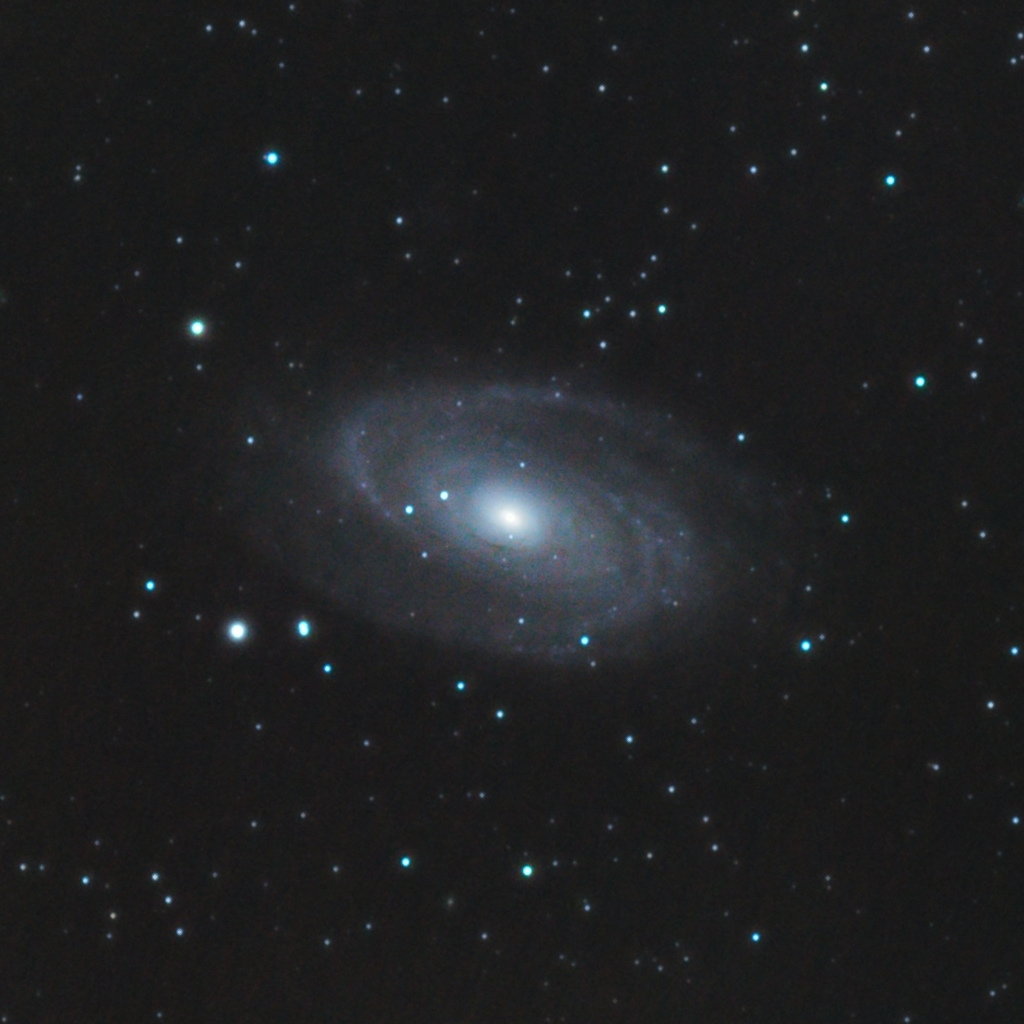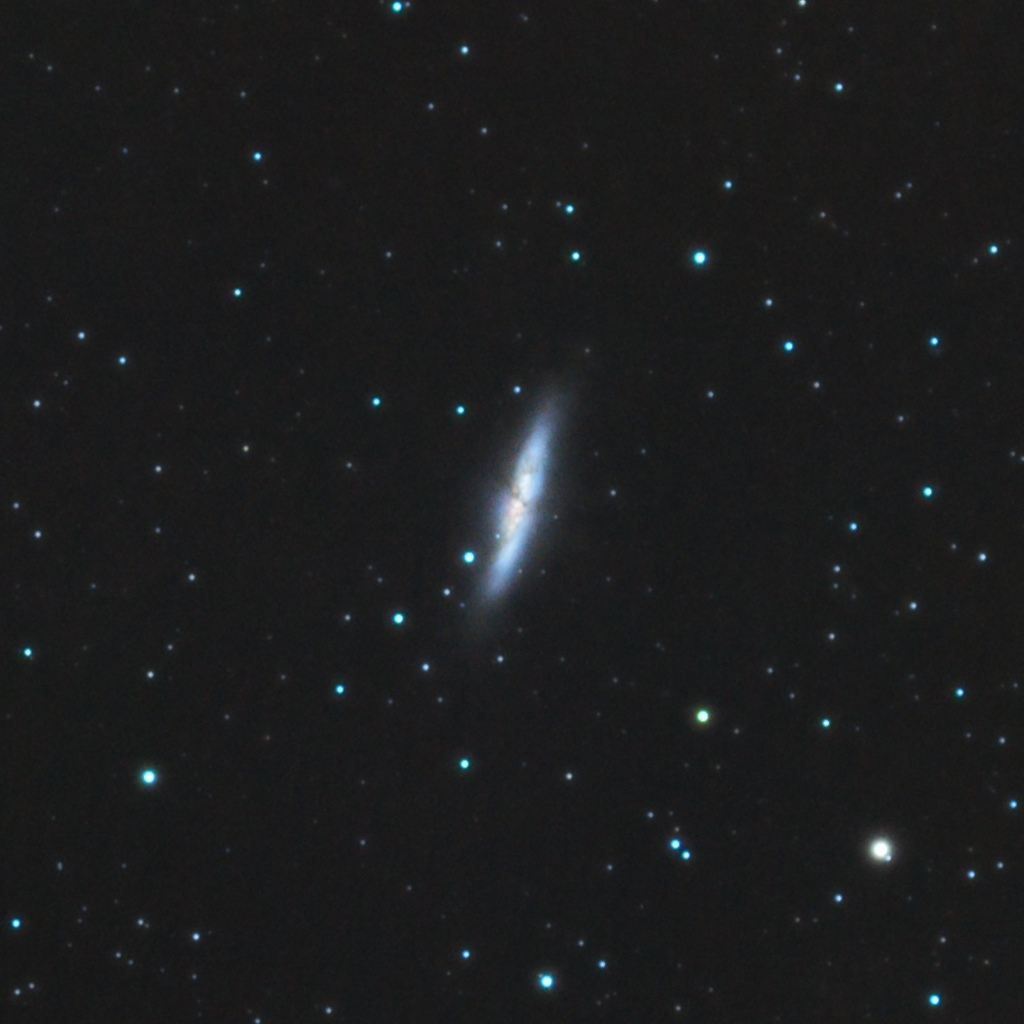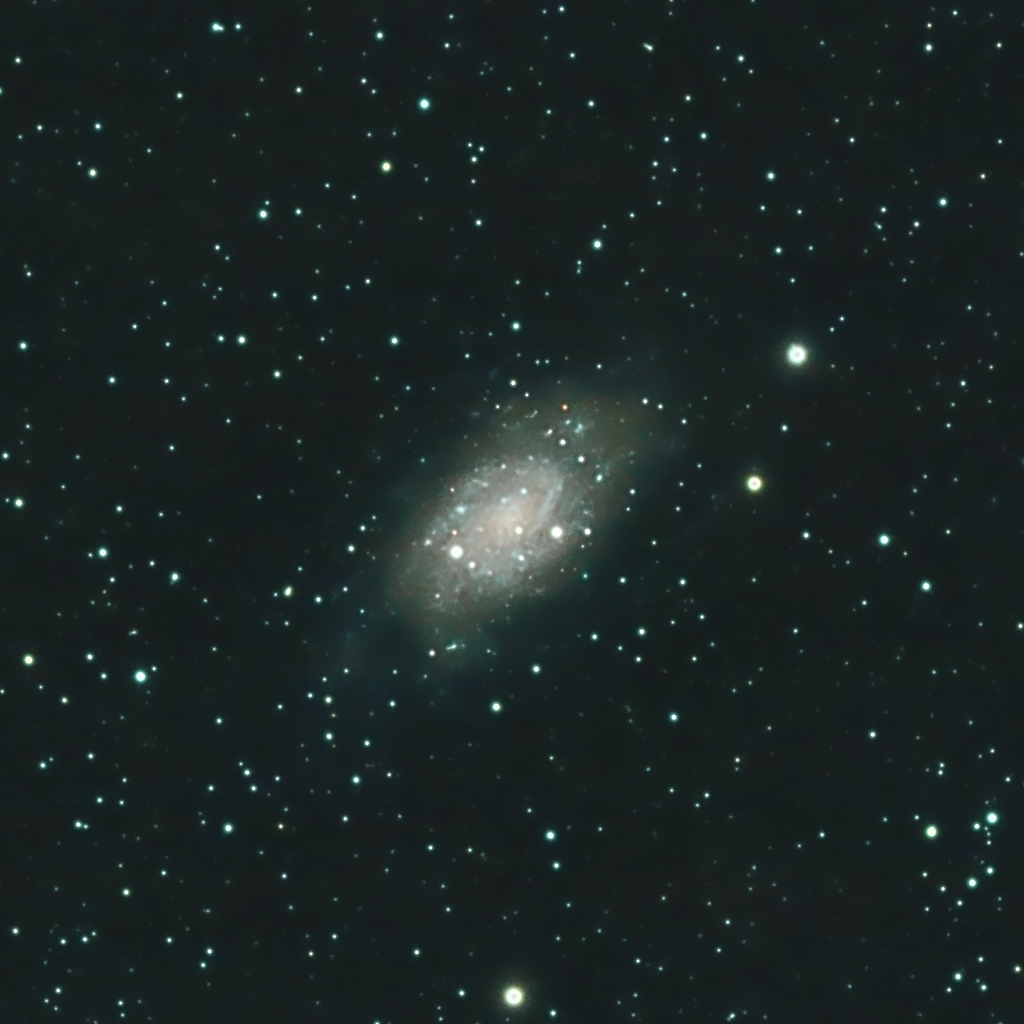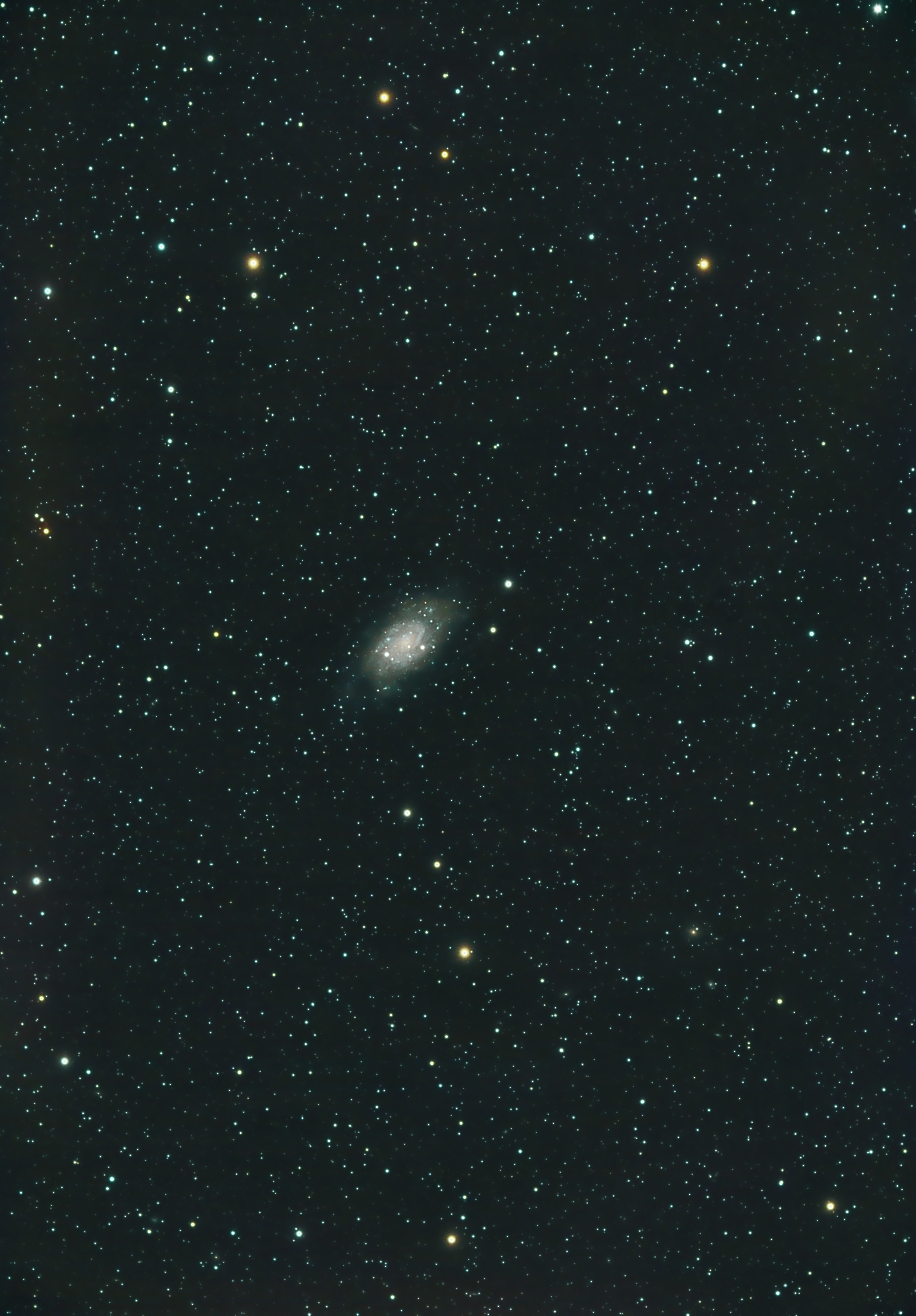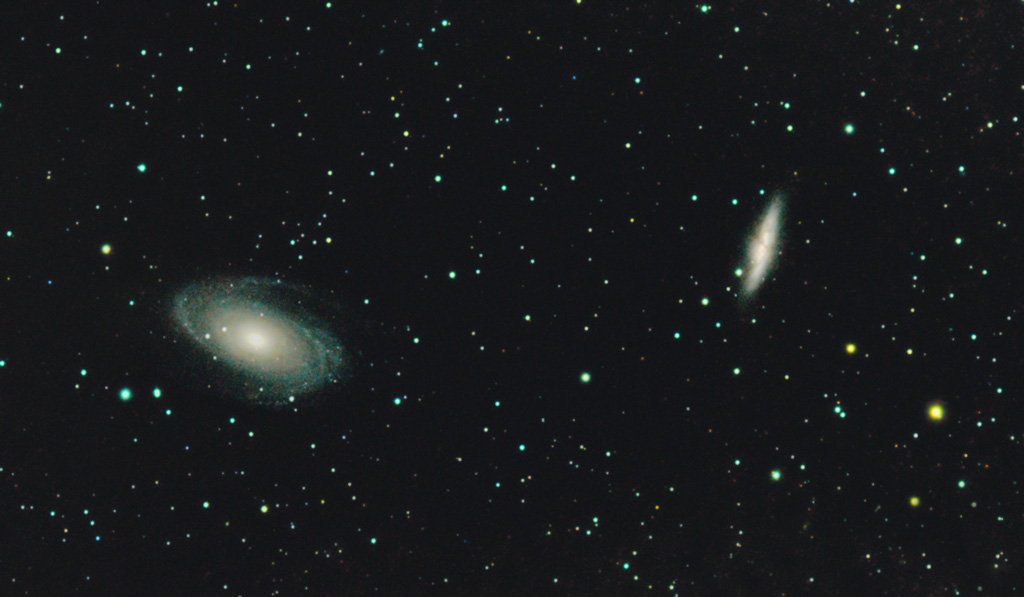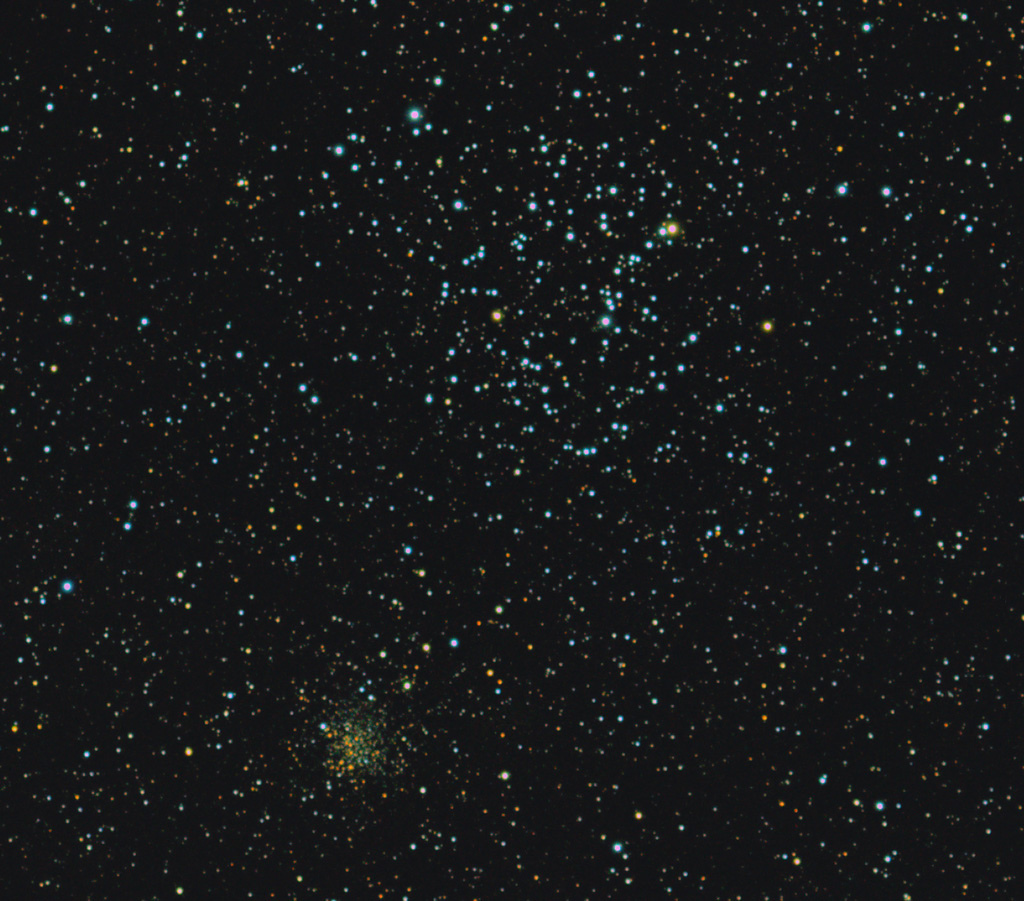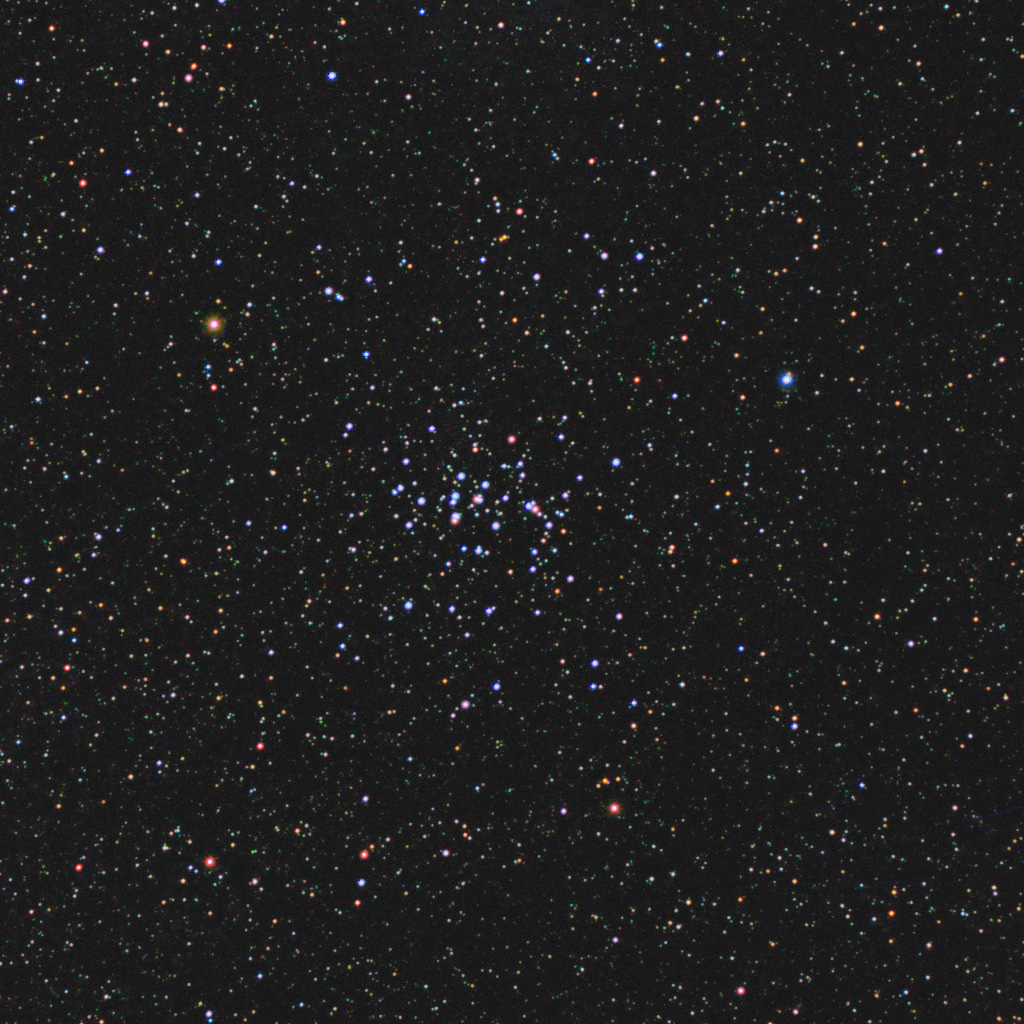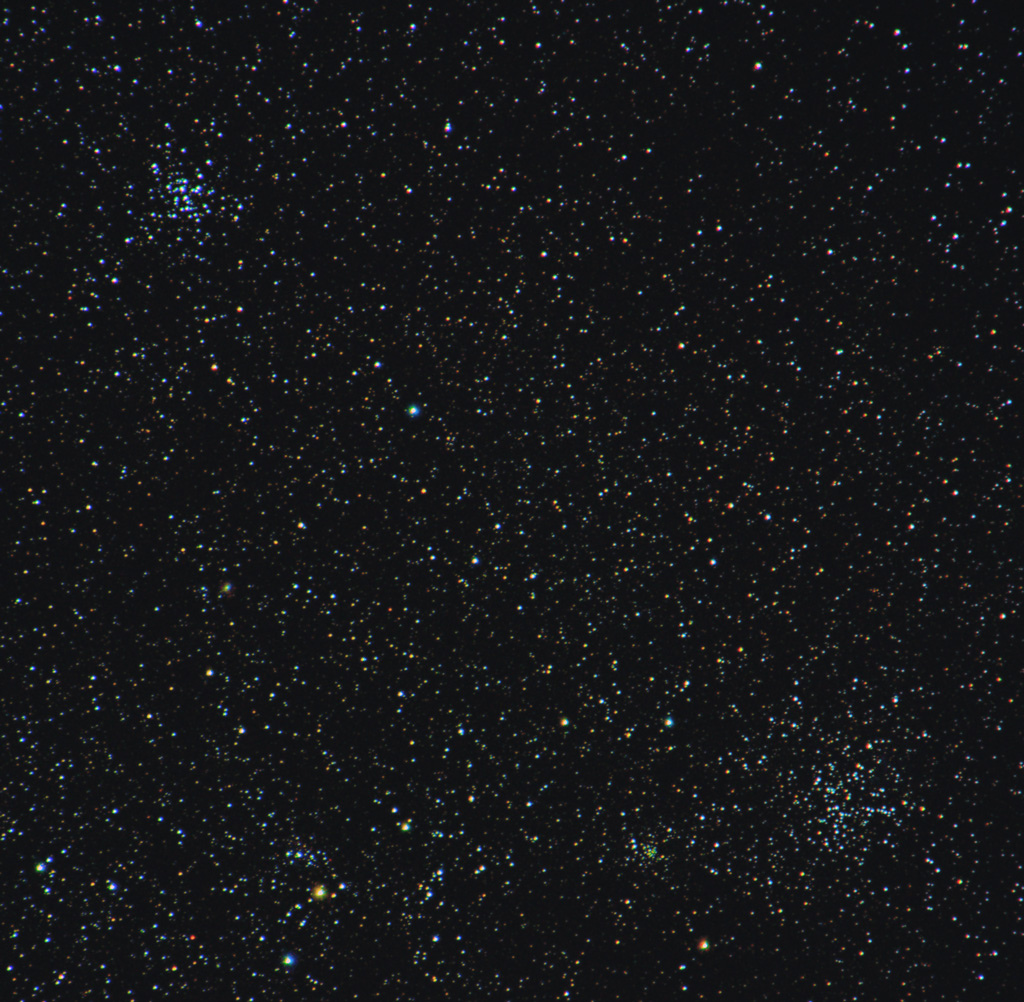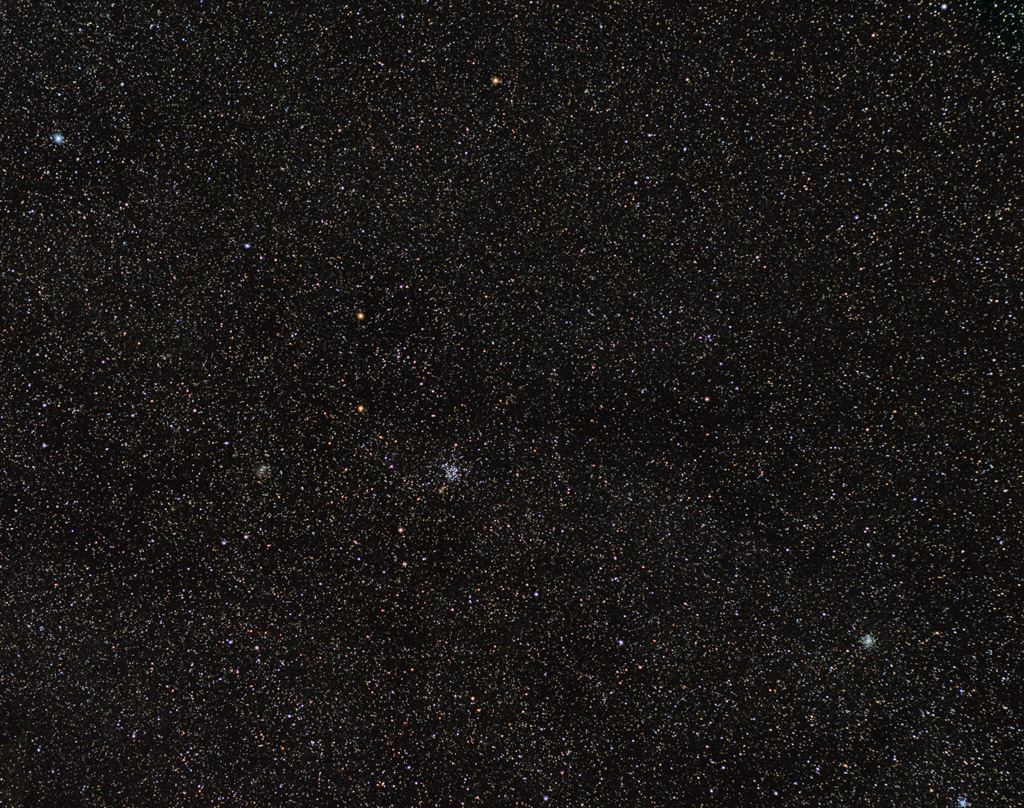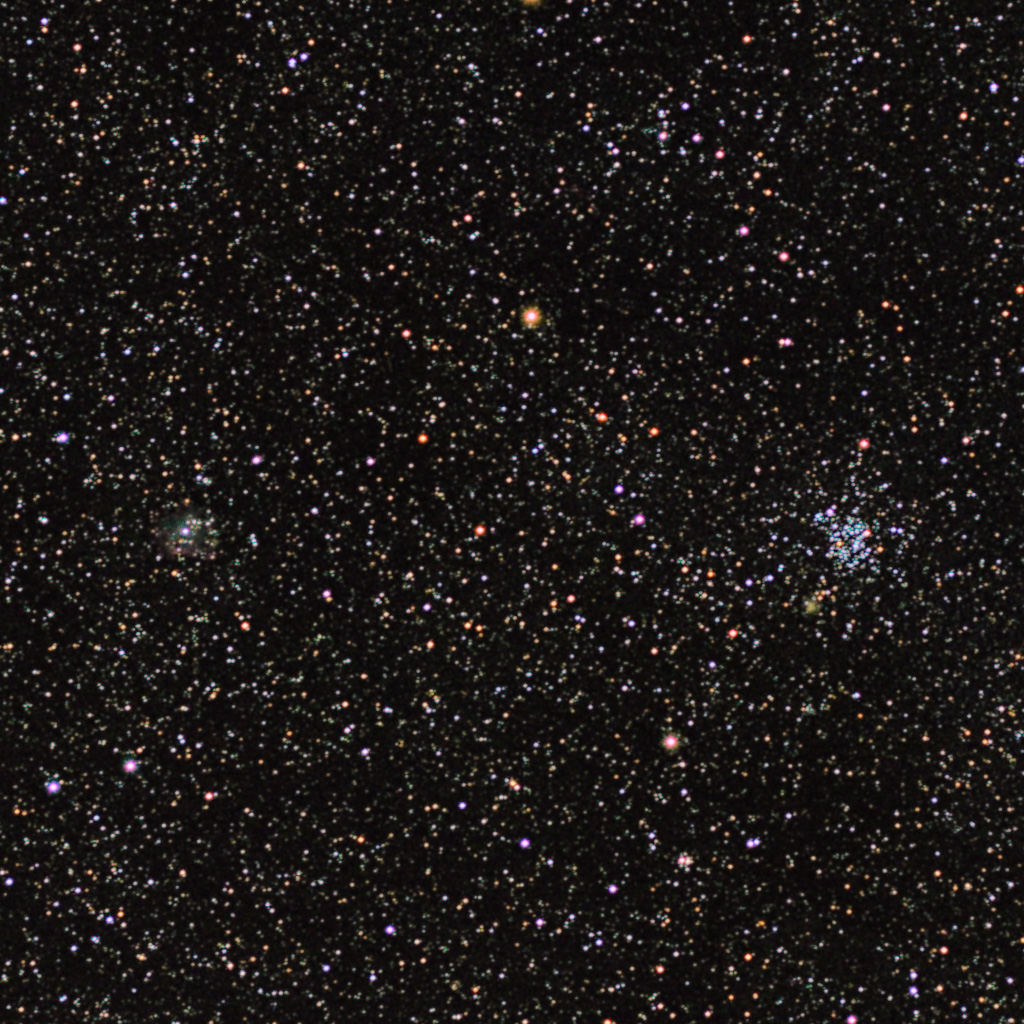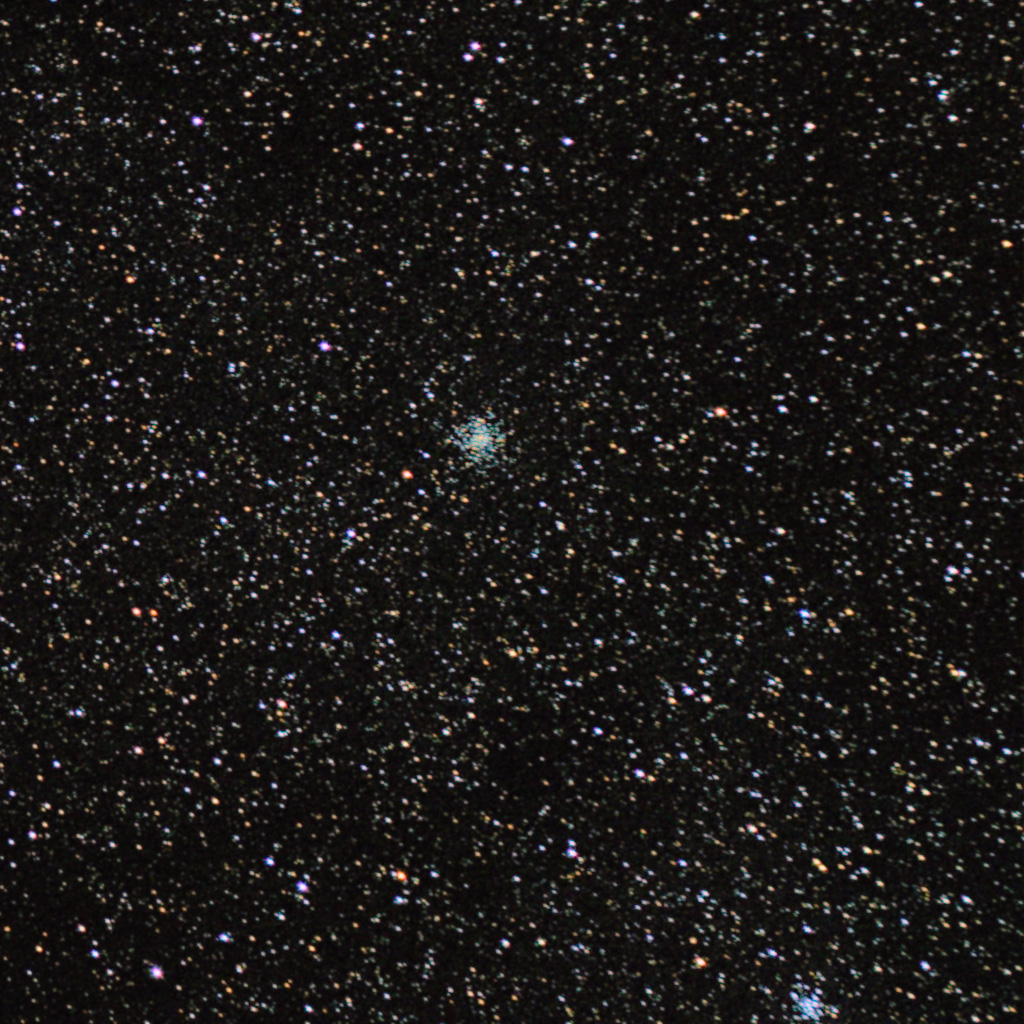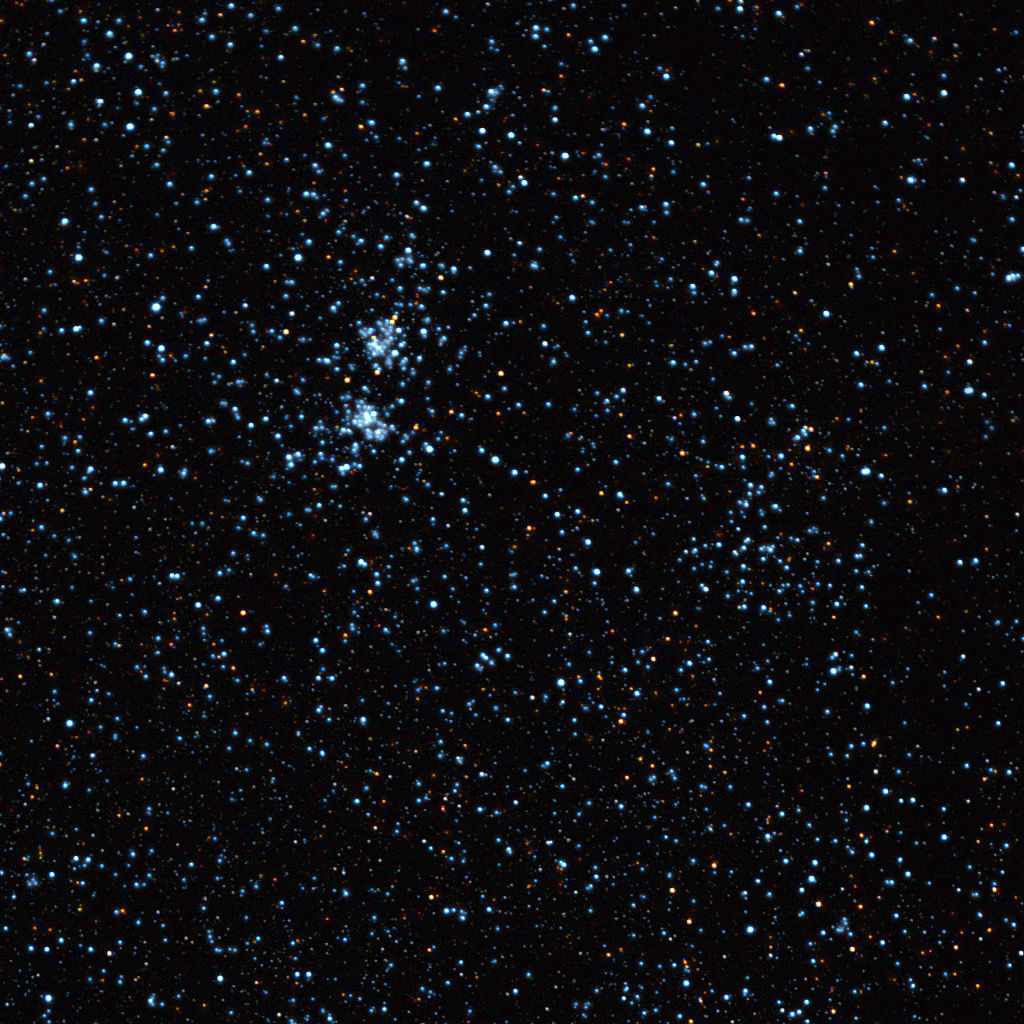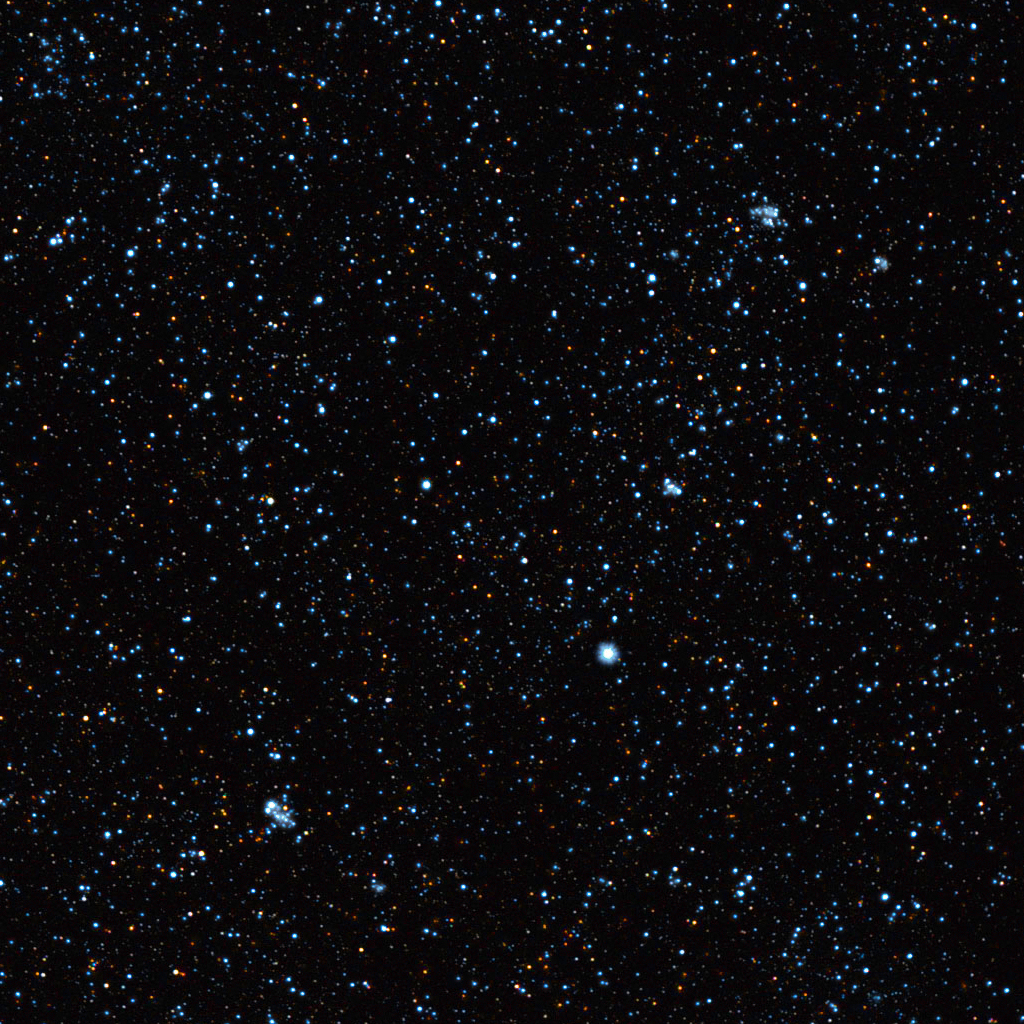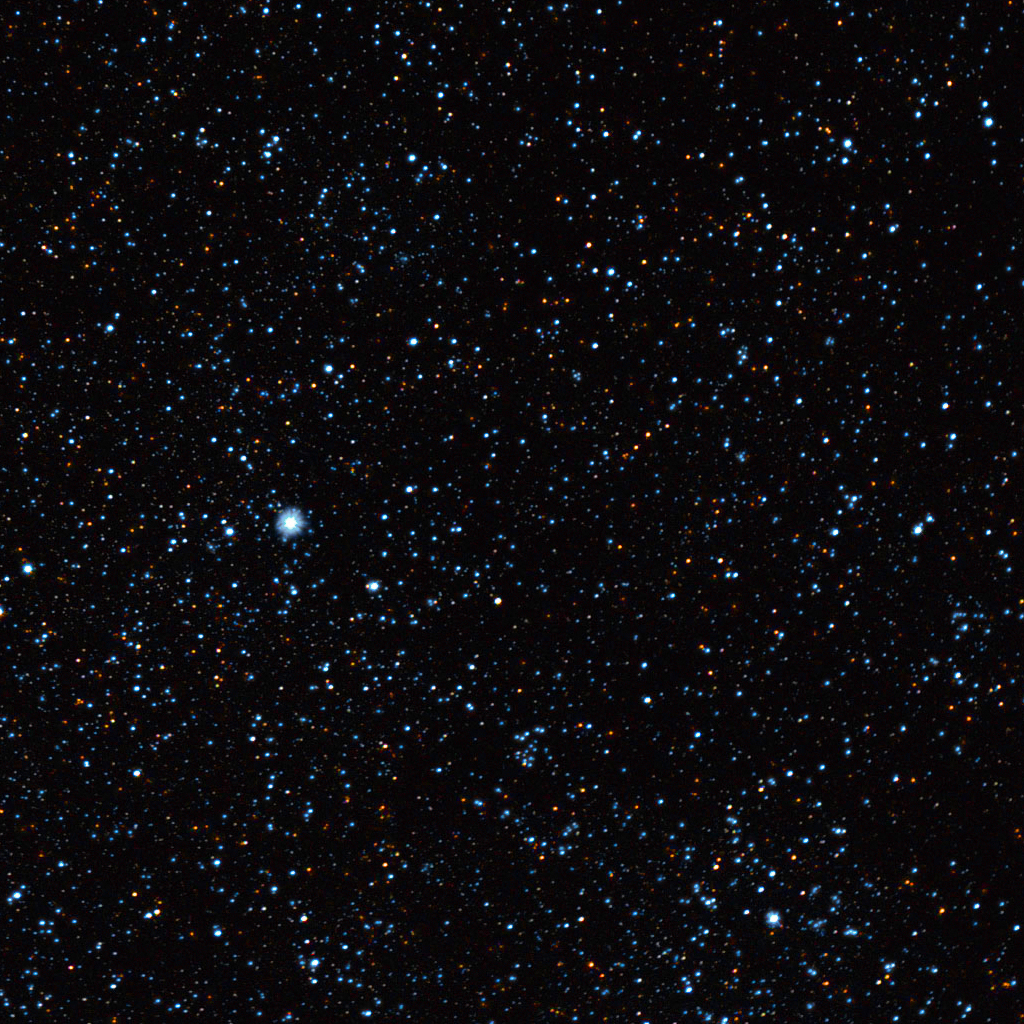Two blog posts ago I showed a better M81 and M82. They were a good improvement over my first try. I have, since, experimented a little with PixInsight, a program which I intend to purchase because it’s available on GNU/Linux.
I’ll have to revise this processing, because of a slight green tint in the shadows and an excess of denoise and deconvolution, but I’m glad I set an ambitious target on this easy galaxy that is not so easy with my equipment and sky. The moon was full and brighter than usual, because of a close perigee, so it was time to experiment. This image is the sum of 162 5-minute frames at ISO400. That amounts to 12 hours! At least I was able to finally tame the thermal noise that has always bothered me to no end.
NGC2403 is an intermediate spiral galaxy. That means something in between a barred and an unbarred spiral galaxy. It belongs to the M81 group and is about eight million light-years away.
Here’s the full field:
About a month after trying for the first time, I took another chance at M81 and M82, two of the few galaxies that are bright enough to be imaged with my equipment from my light polluted skies. This time it’s 32x600” at ISO400, and a definite improvement.
After realizing that M35 is indeed a nice cluster when taking a wide field around it, I thought I’d take a closer look at it. This framing also shows NGC2158, a much older and farther cluster. This is the sum of 15 ten-minute images at ISO400.
Here’s a picture that proves that no matter how many sub-frames you do, you still need darks. There’s some worryingly low SNR in this image, it being the sigma-kappa stack of 118 sub-frames. But then again, each frame has been exposed for only 60 seconds, so it makes sense. I wanted to try having a really large numbers of frames, and increase the ISO settings. Not a good idea.
Noise at ISO1600 is so much worse, with my Canon 450D, that I’ll rather stick with ISO400.
Anyway, this is an interesting picture. Right behind this beautiful cluster, M44 aka The Beehive cluster, I spotted a tiny (for my standards) galaxy: PGC24431. I couldn’t find much about it on the Internet, except that its magnitude is 15.2. You can identify it thanks to this progression:
It’s undeniably it. If you know anything about it, please let me know.
M36 and M38, two bright open clusters in Auriga, have been imaged here with what I knew would be an unfit lens, but I had to be sure. This 18-200mm Canon lens presents severe chromatic and comatic aberrations, as you can see if you click on the picture above.
Visible in this picture are also NGC1907 (better visible here) and NGC1931 (which I really have to image properly when I get my guider camera back).
M31 and M33, which I have imaged before (here and here) are two spiral galaxies that are part of our Local Group. Unfortunately this picture doesn’t show much of them, and the fault falls on the usual suspects: little time after darkness to image them before they set behind the artificial landscape of my human neighborhood, the ever standing light pollution, the guider camera out for repair.
Nonetheless this is a nice framing which I should integrate more and get a little better. I wish I had clean skies.
I know what you’re thinking: this image has nothing on this other one (courtesy AAPOD), but neither have my skies compared to those, or my equipment compared to that one, or my lack of a guider camera compared to the lack of such lack.
But one day, sooner or later, I’ll produce pictures like that. For the time being, I have to make do with light pollution capped images at two and half, three minutes top (with the 50mm lens). Bear with me.
The wide field streak continues uninterrupted, now that the weather is finally giving me a well deserved break. so here I present you with my take on the area surrounding the open cluster M35, in Gemini. M35 is 2800 light-years away and it spans 28 arcminutes, i.e. almost the size of the moon. This image is the sum of 51 3-minute shots, properly calibrated with dark and flat frames of course.
You can see details cropped to 100% here:
A keen eye will also notice NGC2174, an emission nebula associated with the star cluster NGC2175, visible in the picture left (south) of M35. Mental note to self: image that nebula with the 80ED refractor once the guider camera is repaired.
My streak of pictures taken with the 50mm lens continues, as I await the final verdict on the fate of my guider camera, which is currently out for repair. This time I turned my attention to the area south of the Double Cluster. In the first image, above, you can see the Double Cluster itself, aka NGC869/884, which I imaged with the 80ED semi-apo recently, NGC744, a small open cluster 399 light-years away, and NGC957, another small open cluster, this time 5900 light-years away.
The second picture shoes NGC663, an interesting and young open cluster in Cassiopeia. About 25 to 30 million years old and 6850 light-years away, this cluster presents a high number of Be stars, i.e. stars with prominent emission lines of hydrogen in their spectra. Also in this picture, NGC457, also known as the Owl Cluster or the ET Cluster, is 21 million years old, 7900 light-years away, and has over 150 stars of magnitude between 12 and 15.
In the last picture you can see NGC225, an open cluster 1690 light-years away. The cluster is associated with some nebulosity, which of course is not visible in this image.

